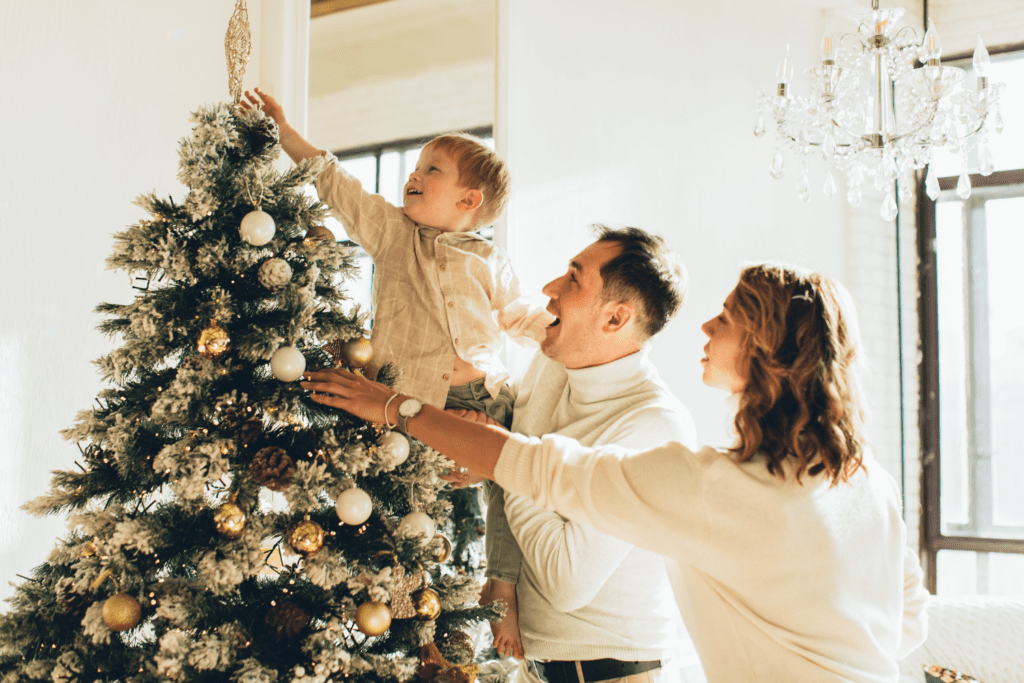Should you buy a real or fake tree this Christmas?

The traditional Christmas tree can’t be beaten. Its natural beauty and accompanying scent of pine reminds us of festivities and joy. Going to the garden centre to pick out a tree makes for a fun, authentic Christmas experience – especially for the children. Yet it comes with the payoff of maintenance and mess, which is why many opt for a hassle-free artificial tree. Plus, with the ever-rising cost of living, many families will be conscious about their budget. A fake tree may be a worthy investment because it can be reused year after year, but does the money saved really outweigh the environmental impact?
Which is the most sustainable?
People often think that a fake tree is the eco-friendlier option – unlike real trees, which are thrown away or burned after Christmas, you can re-use it every year. In fact, a fake tree can actually have a smaller carbon footprint than a real one. However, it would take a decade of using the same tree to offset this footprint, and many families will have their eyes on an upgrade long before this. In fact, it has been estimated that fake trees are only used four times on average before being thrown away.
Most artificial trees are produced in China, made from plastic and metal (which can’t be recycled) and then shipped overseas, further increasing their carbon footprint. According to the Carbon Trust, the average artificial tree has a carbon footprint of roughly 40kg – more than ten times that of a real tree that’s burned after Christmas. Since they are non-recyclable, most end up in landfill.
If you plan to buy a real tree, how you dispose of it could have also have environmental impacts. Burning it puts all the carbon captured by the tree back into the atmosphere, while taking it to your local tip means it ends in landfill, where microorganisms break down the wood. This causes the release of additional greenhouse gases and results in a carbon footprint of about 16 kilos.
However, you can reduce the carbon footprint of your tree by disposing of it properly. The best method is to chip it and use it as mulch – returning it back to the soil where the carbon can be captured as microorganisms break it down into even smaller fragments – reducing its carbon footprint to just 3.5 kilos. You may be able to find a Christmas tree collection service near you; last year, our Northwich branch got involved with their local service in collaboration with St Luke’s Hospice. So, unless you are buying a fake tree for life, the likelihood is a real tree is the more sustainable option.
Artificial trees: a worthy investment?
The main disadvantage of cut trees is the cost. The price for a 6ft tree is typically between £40 to £60, with some premium organic trees exceeding that. A plastic tree of the same size costs around £100 to £200, so after a few years you’d already be making your money back. Also, fake trees are less hassle. Once assembled, you’re good to go. You’ve saved both time and money as there’s no need to sweep up pine needles, worry about sap stains, or water the tree.
Real Christmas trees: think organic & think local
So, if you’re in the market for an authentic Christmas tree, what should you look for? According to the Soil Association, there are three factors you should consider:
Source an FSC Certified tree
Source it organically
Source it locally
Like many crops, Christmas trees can suffer from pest problems, so farms may use pesticide as a deterrent. However, pesticide can be damaging to local insect populations and can create long-term environmental problems. Trees with a Forest Stewardship Council (FSC) label guarantee zero use of pesticide and ensures that they are grown sustainably and responsibly. Secondly, if possible, look for organic trees. While they can be harder to source, organic trees are grown on purpose-built farms, so there’s no need to worry about deforestation. Lastly, and most importantly, purchase your tree as local as possible. This supports local businesses, reduces travel distance and thereby cuts your own carbon footprint.
Still can’t decide? How about renting a tree?
There are now companies that offer rented Christmas trees. Once Christmas is over, these trees are replanted back into the soil for the rest of the year. So, in theory, you could have the same tree every year. However, they sell out fast and can be pricey; in London it works out factionally more expensive to rent, but in areas where cut trees are cheaper it could be much more expensive. While this level of sustainability comes at a high price, you’d certainly be adding to your moral wealth.
Decided what tree to buy and up for some more festive fun? Pop into one of our branches this December where we will be hosting events like Christmas crafts, free mince pie mornings and even mulled wine networking events…
Sources: Carbon Trust, Soil Association, BBC
This is a marketing blog by Howden Insurance.



